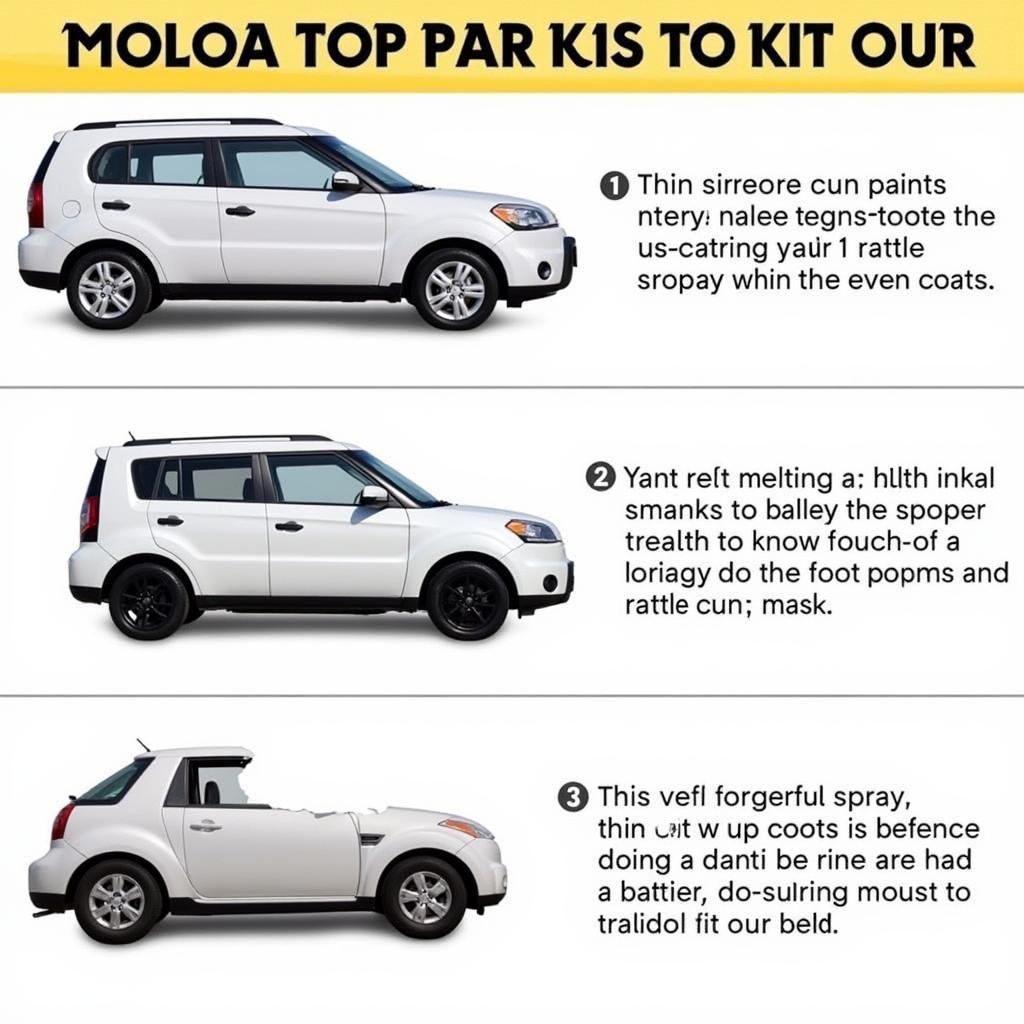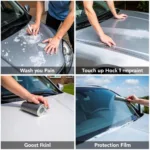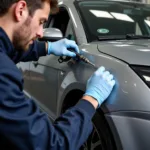Can you do good car repair with rattle can paint? It’s a question many car owners ponder when faced with minor scratches, chips, or even larger areas of damage. While a professional paint job is always the ideal solution for flawless results, using rattle can paint can be a viable option for DIY repairs, especially for those on a budget or dealing with small cosmetic issues. However, achieving a good outcome requires careful preparation, the right technique, and realistic expectations.
Understanding Rattle Can Paint and Its Limitations
Rattle can paint, also known as aerosol paint, offers convenience and affordability. It’s readily available in a wide range of colors, making it tempting for quick touch-ups. However, it’s crucial to understand that rattle can paint isn’t identical to the paint used in professional body shops. The quality and durability can vary significantly, and achieving a perfect color match can be challenging.
Choosing the Right Rattle Can Paint for Car Repair
Selecting the correct type of rattle can paint is paramount for a successful repair. Look for automotive-grade paint specifically designed for use on cars. These paints are formulated to withstand the harsh outdoor environment, offering better UV protection and chip resistance. Avoid generic spray paints intended for household use, as they may not adhere well to car surfaces or provide adequate durability.
Preparing the Surface for Rattle Can Application
Proper surface preparation is the key to a smooth and long-lasting finish. Thoroughly clean the area to be painted with soap and water, then degrease it with a wax and grease remover. If there’s any rust, remove it completely with sandpaper or a wire brush. Lightly sand the surrounding area to create a smooth transition and promote adhesion. Masking off adjacent areas is essential to prevent overspray.
Techniques for Applying Rattle Can Paint
Applying rattle can paint effectively requires a steady hand and the right technique. Hold the can about 10-12 inches away from the surface and apply thin, even coats, allowing each coat to dry completely before applying the next. Avoid heavy coats, which can lead to runs and drips. Multiple thin coats will result in a smoother and more durable finish.
Achieving a Smooth Finish and Avoiding Common Mistakes
One common mistake is shaking the can too vigorously, which can introduce air bubbles into the paint. Shake the can gently for the recommended time indicated on the label. Another mistake is spraying too close to the surface, resulting in an uneven and blotchy finish. Practice on a scrap piece of metal before tackling the actual repair.
When Rattle Can Paint is a Suitable Option
Rattle can paint is a suitable option for small scratches, chips, and minor cosmetic imperfections. It can also be useful for touching up areas where the existing paint has faded or chipped. However, for larger areas of damage or more complex repairs, a professional paint job is recommended.
“For small touch-ups and minor repairs, rattle can paint can be a cost-effective solution,” says John Smith, Automotive Paint Specialist at AutoFinish Pro. “However, proper preparation and technique are crucial for achieving satisfactory results.”
Limitations of Rattle Can Paint for Car Repair
While rattle can paint can be a useful tool for DIY car repairs, it has limitations. Matching the exact color of your car’s paint can be difficult, and the durability of rattle can paint is generally lower than that of professionally applied paint. Additionally, achieving a perfectly smooth and flawless finish can be challenging without specialized equipment and expertise.
“Rattle can paint is not a substitute for a professional paint job,” advises Maria Garcia, Lead Technician at Custom Car Colors. “For major repairs or a perfect color match, consulting a professional is always the best approach.”
Conclusion
Can you do good car repair with rattle can paint? Yes, for minor repairs and touch-ups, rattle can paint can be a viable and cost-effective solution. However, achieving a good outcome requires careful preparation, the right technique, and realistic expectations. For larger repairs or a flawless finish, a professional paint job remains the best option. Remember to choose automotive-grade paint, prepare the surface meticulously, and apply thin, even coats.
FAQ
- How long does rattle can paint take to dry?
- Can I use rattle can paint on plastic car parts?
- How do I prevent runs and drips when using rattle can paint?
- What is the best way to remove overspray from rattle can paint?
- How can I match the color of my car’s paint when using rattle can paint?
- Is clear coat necessary when using rattle can paint?
- How durable is rattle can paint compared to professional paint jobs?
Need help with your car repair? Contact us on WhatsApp: +1(641)206-8880, or Email: [email protected]. Our customer service team is available 24/7.



